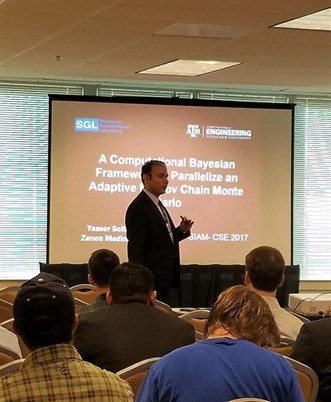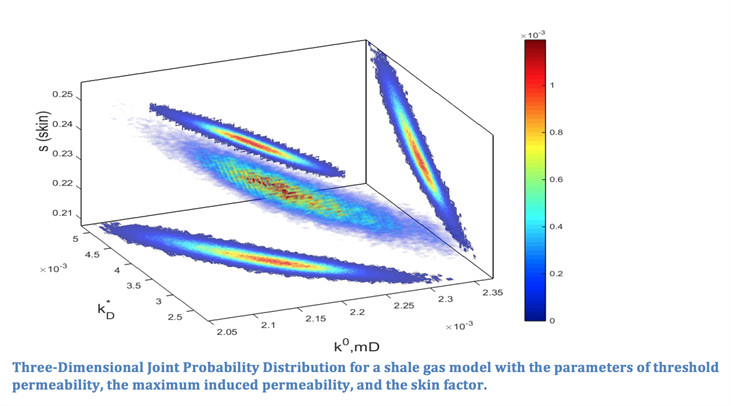 Yasser Soltanpour, graduate student in the Zachry Department of Civil Engineering and member of the Stochastic Geomechanics Laboratory (SGL) at Texas A&M University, presented a technical talk at the Computational Science and Engineering Conference in Atlanta, Georgia, hosted by the Society for Industrial and Applied Mathematics (SIAM-CSE17).
Yasser Soltanpour, graduate student in the Zachry Department of Civil Engineering and member of the Stochastic Geomechanics Laboratory (SGL) at Texas A&M University, presented a technical talk at the Computational Science and Engineering Conference in Atlanta, Georgia, hosted by the Society for Industrial and Applied Mathematics (SIAM-CSE17).
The conference seeks to enable in-depth technical discussions on a wide variety of major computational efforts on large-scale problems in science and engineering, foster the interdisciplinary culture required to meet these large-scale challenges, and promote the training of the next generation of computational scientists.
According to Soltanpour and his supervisor Dr. Zenon Medina-Cetina, associate professor in civil engineering and principal investigator on the project, the opportunity to present at SIAM-CSE17 is a “big deal.”
“SIAM is one of the most outstanding professional societies, where you can meet remarkable people from science, mathematics and engineering. I’m going to speak among them; that’s going to be challenging,” Soltanpour said prior to the conference.
“SGL has organized technical sessions in the past at SIAM-CSE, and I am very proud to have our presentation accepted for this year's conference,” said Medina-Cetina. “Our topic on Bayesian inference is at the edge of computational science and engineering because it introduces a new methodology that ensures computational efficiency in the probabilistic solution of strongly ill-posed problems.”
The presentation,“A Computational Bayesian Framework to Parallelize an Adaptive Markov Chain Monte Carlo,”introduces a new method to optimize the convergence of an adaptive Markov Chain Monte Carlo approach needed to formulate high-dimensional parametric Bayesian formulations. This method was applied to the calibration of a forward model simulating shale gas well production in Central Texas.
The figure below shows an example of a joint probability distribution resulting from the calibration of the shale gas production model (posterior distribution). This reflects the uncertainty of the model parameters and the corresponding correlation structure among them (linear and non-linear). The proposed approach departs from traditional optimization methods where only the best parameter ‘point’ estimate is computed.

Soltanpour is currently working toward finishing his Ph.D. in civil engineering. His studies mostly focus on the probabilistic simulation of reservoir analyses. This was the first conference at which Soltanpour has presented this method, and it seemed to have exceeded his and the audience's expectations.
“The experience overall was very fruitful, the audience liked my presentation and asked several questions,” Soltanpour said. “I met some pioneers in optimization who provided positive feedback about my work. They encouraged me to continue working on the topic.”
Contributing author: Anna Heller